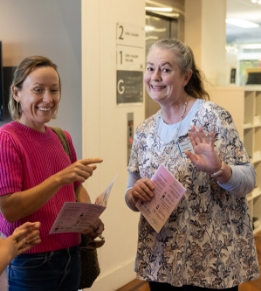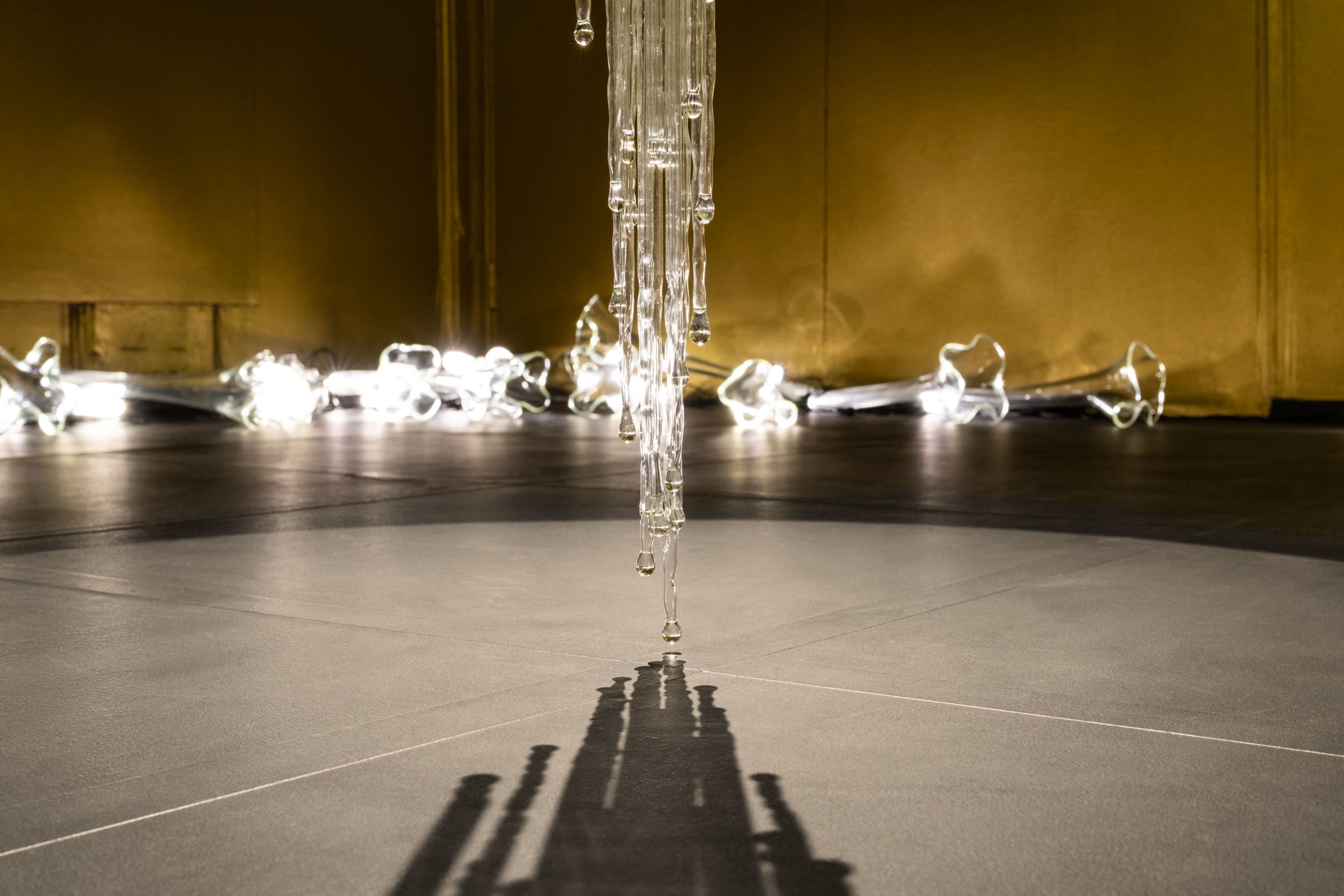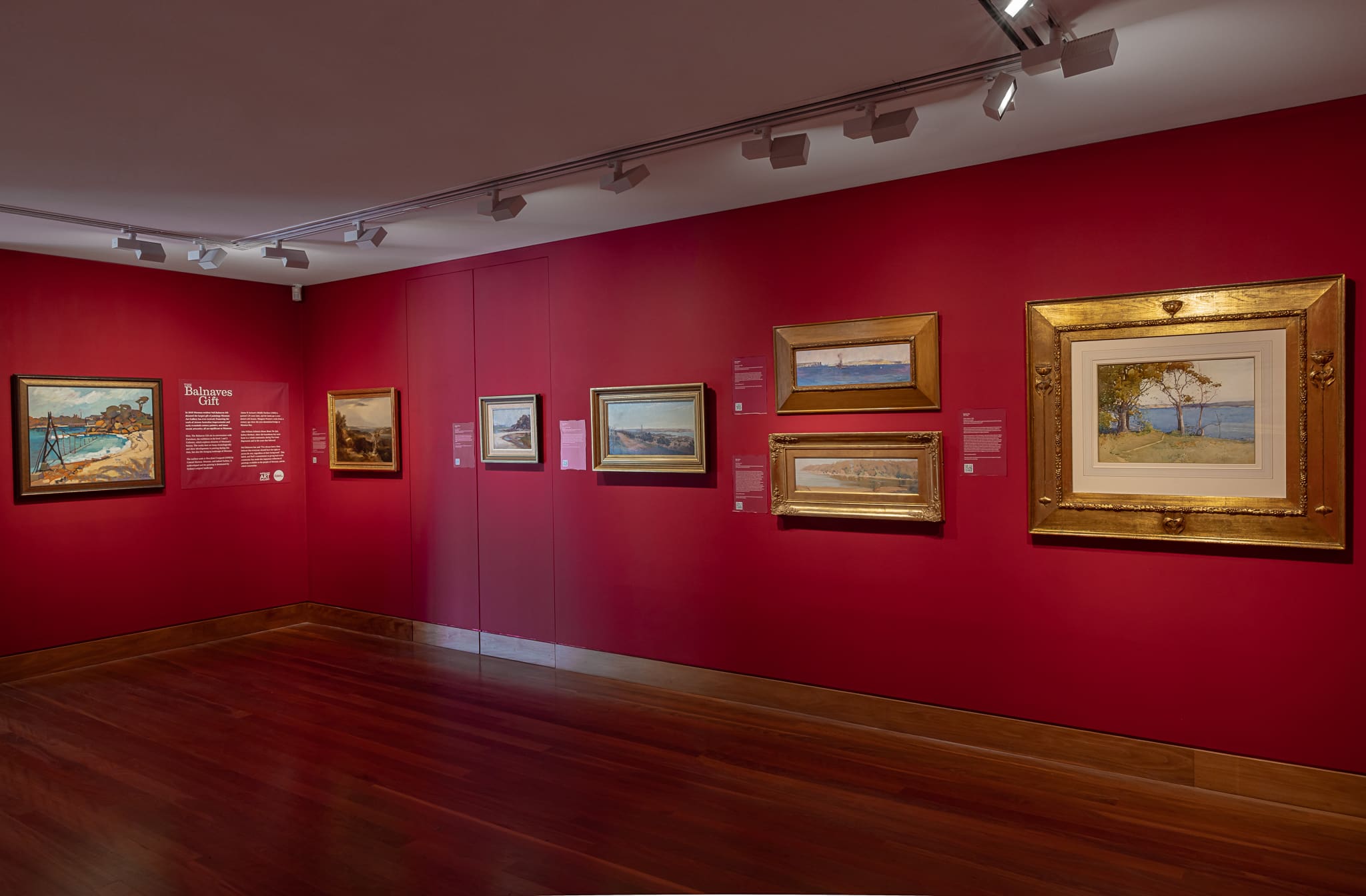Foreshore
Foreshore is an exhibition focused on where the land and harbour meet in Mosman and looks at elements from its history, including stories about its Indigenous, military industrial and leisure of the past. This exhibition draws together the work of contemporary artists, with historic works from the Mosman Art Collection. Also featured is a collaboration with the Sydney Institute of Marine Science (SIMS). This work features photographs of White’s Seahorse submitted by citizen scientists, who have helped document The Sydney Seahorse Project and the conservation work carried out by SIMS.
-
John William Ashton
John William Ashton was born in York, England in 1881, to the prominent artist and teacher, James Ashton. The family emigrated to Adelaide in 1884 where James Ashton established the Norwood School of Art. Following his schooling Will Ashton worked alongside his father in his studio and became friends with fellow students Hans Heysen, Hayley Lever and Gustave A. Barnes. As a young man he travelled abroad and studied at Julius Olsson’s School of Landscape and Sea Painting at St. Ives, Cornwall. In 1902 he moved to Paris to study at Académie Julian in Paris, mixing with fellow students including Emanuel Phillips Fox, David Davies, James Quinn, Ambrose Paterson and Hans Heysen. Apart from his formal studies, Ashton sketched at weekends in Paris streets or on the banks of the River Seine.
From an early age the artist gained critical acclaim, being selected for exhibition with the Royal Academy. From that time onwards ‘J. William Ashton’ dropped his first name and signed his work ‘Will Ashton’ to avoid confusion with his father and also the Australian artist Julian Ashton.
-
Ethel Carrick Fox
Born in England in 1872, Ethel Carrick studied at the Slade School in London, studying drawing with Francis Bate, who was known for encouraging en plein air painting, a bright palette and close observance of tonal values. She met her future husband, Australian artist Emanuel Phillips Fox at the St Ives open air painting colony in Cornwall. Following their marriage in 1905, the couple established an artistic partnership that has rarely been matched. Like so many artists of the late nineteenth and early twentieth century, they were trained in traditional academies, but were interested in the new impressionist techniques and the subjects of urban bourgeois life.
Ethel Carrick Fox visited Australia many times during her long and successful painting career, with her first visit in 1908, and again in 1913. On this trip the Foxes spent many months in Sydney painting views of the harbour. They stayed at ‘Redcourt’ on Cremorne Road across Middle Head from Balmoral and also by the ocean at Manly. Carrick Fox had a great interest in theosophy also stayed at ‘The Manors’, the theosophical retreat in Mosman during the periods of their time in Sydney when Emanuel Phillips Fox returned to Melbourne briefly to visit his family.
-
Ken Done
Born 29 June, 1940, in Sydney, Ken left school at 14 to enter the National Art School in East Sydney. After 5 years study, he commenced a highly successful career as an art director and designer in New York, London and Sydney.
At the age of 40, after painting for many years, he gave up his advertising career to become a painter full-time. Since then, he has held over 100 one-man shows, including major exhibitions in Australia, Europe, Japan and the USA. His works have been shown in the Archibald, Sulman, Wynne, Blake, and Dobell Prizes.
-
Simone Douglas
Simone Douglas is a contemporary artist whose work spans installation, photography, sculpture, video, and durational site-specific projects. As an artist, advocate, and educator, her work centers on highlighting the role of art in shaping our understanding of our collective future.
Through the intersection of art, technology, and environmentalism, her work seeks to explore art’s relationship with and responsibility to people, land, and community to consider the following: How can art engage with historical and contemporary narratives around land, culture, and climate? How can it contribute to ecological regeneration through sustainable practices?
-
Albert Henry Fullwood
Fullwood was born in England in 1863 and studied art at the Birmingham School of Art. In 1883 he emigrated to Sydney and worked as an illustrator on various publications including The Picturesque Atlas of Australasia, the Bulletin, the Australian Town and Country Journal andnumerous others.
Fullwood became part of the thriving late 19th century Sydney art scene and joined the artists William Ashton, Alfred Daplyn, Charles Conder and Girolamo Nerli on painting excursions to the countryside at Richmond. He was considered to be somewhat of a veteran of the Curlew Camp at Little Sirius Cove where his nickname was ‘Uncle Remus’. His painting View from Balmoral (1885) reveals his confident development of the picturesque impressionist style. The distinct blue headland behind the hazy steamers and white sails on Sydney Harbour provides a perfect backdrop for the backlit family grouping on the sandy beach.
Henry Fullwood left for America in 1900 and then lived in London where he exhibited with the Royal Academy and the Paris Salon. During the First World War, Fullwood became an official war artist and returned to Australia in 1920.
-
Elioth Gruner
Elioth Gruner was born in Gisborne New Zealand in 1882 and travelled with his family to Sydney in 1883. As a young man Gruner undertook part time instruction with Julian Ashton at the Art Society of New South Wales and later came under the influence of the flamboyant George Lambert who encouraged a more generous application of paint. By 1906 he exhibited regularly with the Society of Artists where he received positive reviews and became a close friend of Norman Lindsay who along with Julian Ashton and Howard Hinton were important early purchasers of his work.
Elioth Gruner painted many scenes of Sydney Harbour en plein air between 1913 and 1928.
-
James R Jackson
James R. Jackson was born in New Zealand in 1882 and came to Sydney with his family in 1890. After preliminary studies in drawing at the Art Society of New South Wales he travelled to London and Paris in 1906. As with other Australian artists at that time, art tuition in Europe became a rite of passage for young artists. Here he learned to paint using thick impasto and became immersed in the art of the French Impressionists.
On his return to Australia in 1908, Jackson exhibited with the Art Society and made his home on the North Shore where he painted impressionistic Sydney Harbour land and seascapes. In addition to regular exhibitions in Sydney and Melbourne, Jackson taught drawing and painting at the Art Society from 1917 to 1926. In 1924 he married one of his students Dorothea (Dora) Toovey who went on to become a successful portrait and landscape painter.
After spending time in country NSW during the Depression, Jackson returned to Sydney in 1936 to paint in a new studio in Mosman and became a foundation member of the Australian Academy of Art in 1937. Although he received many art awards for his later paintings, it is his earlier impressionist depictions of Sydney Harbour that he is more fondly remembered for.
-
Peter Kingston
Peter Kingston (1943–2022), born in Sydney, lived and worked in Lavender Bay, Sydney. Kingston is a celebrated Australian landscape painter. He received a Bachelor of Arts from the University of New South Wales in 1965 and later tutored in architecture at the University of Sydney. He held over 35 solo exhibitions since 1978 in Sydney and New York. A survey exhibition of his work, titled Harbourlights, was toured by Manly Gallery in 2004, coinciding with the release of his first monograph. Kingston has been included in numerous group exhibitions, including the Dobell Drawing Prize at the Art Gallery of New South Wales from 1993 to 2000, the Wynne Prize from 1995 to 2003, and the Sulman Prize from 1998 to 2001. In 2019, he participated in the significant exhibition Bohemian Harbour: Artists of Lavender Bay, alongside fellow artist and friend Brett Whiteley, at the Museum of Sydney. Earlier this year the State Library had a major exhibition of his works.
Kingston has exhibited with Australian Galleries since 1993. Kingston’s work is held in the collections of the National Gallery of Australia, the Art Gallery of New South Wales, the State Library of New South Wales, the Museum of Sydney; several regional galleries; and internationally by the Bibliothèque de la Ville, Belgium; Costen Library, Los Angeles; and the National Film Library in Tokyo. In 2019, The Beagle Press published the artist’s second monograph, Peter Kingston, written by Barry Pearce.
-
Anna May Kirk
Anna May Kirk is an multi-disciplinary artist, curator and creative producer based on Gadigal land in Sydney, Australia.
Anna May Kirk’s practice explores how environments transform over deep geological and human historical time, and how this change is experienced. Addressing matters of ecological concern, Kirk’s work make tangible the many processes of environmental transformation that act upon temporal and geographic scales beyond the human sensorium. Often exploring historical time and current climatic events, industries of extraction and instruments of measurement, Kirk critically interrogates cultural traditions of perceiving, measuring, representing and engaging with the natural world.
In 2024, Kirk was awarded the Christine and Stephen Procter Fellowship and Clitheroe Emerging Sculptor Mentorship. In the same year she exhibited work with Cement Fondu, North Sydney Art Prize, Ames Yavuz, QUT Art Museum for the International Symposium for Electronic Art, and co-curated Garden at the End of Time at Tin Sheds Gallery.
-
Jasper Knight
A celebrated presence in the Australian art scene, Jasper Knight’s work has always had associations with the built environment. His works depict everything from unused industrial buildings, wharves, bridges to the busy traffic of the street and the people within it. He is known for his bright, bold use of primary colour and more recently blue monotone colour, that are used on surfaces constructed with industrial materials. His surfaces are often collaged and glossy, providing Knight’s work with lustrous, immersive backdrops upon which line and form are accentuated. Dripping and melting, enamel, gloss acrylic and gesso create textural depth and warmth. Such material transformations naturally lend themselves to perceptions of the industrial landscape itself. Knight’s paintings challenge austere readings of the industrial landscape and replace them with something deeper: living infrastructures, the bones upon which contemporary life is fleshed.
Jasper Knight is one of Australia’s most successful and highly regarded contemporary painters. He is an eight-time finalist in the Archibald Prize, most recently in 2022, a four-time finalist of the Sulman and Wynne Prizes, and is a past winner of the Mosman Art Prize. His work is represented in major national and international collections including the National Gallery of Australia, National Portrait Gallery, Australian Consulate (Manila, Philippines) and the Australian Consulate (Singapore). He has exhibited work internationally in a solo capacity and in group presentations in Bangkok, Beijing, Hong Kong, Los Angeles, Manilla, Miami, Shanghai, Singapore and Taipei.
-
Sydney Long
Sydney Long was born in 1871 at Goulburn, New South Wales. Between 1890 to 1894 he studied under A.J. Daplyn and Julian Ashton at the Art Society of NSW School. Long participated in painting camps along the Nepean River near Richmond, but also made other explorations. In the early 1890s he established his name as an artist with purchases made by the National Art Gallery of NSW in 1894. The following year Long’s style started to move towards the flat surfaces and decorative art nouveau style as expounded by the English Studio magazine, which was widely circulated in Australia. While many of his works owe a debt to the English Aesthetic movement, he was devoted to Australian subject matter and his eucalypt, ti-trees and open plains often included distinctly Australian fauna such as magpies, as well as nymphs and fauns.
An influential teacher of both painting and printmaking, Sydney Long spent much of his time with his students, either in his city studio or his caravan which was permanently based at the Narrabeen Lakes. He was actively involved in the Royal Art Society of NSW, and was also active as a Trustee of the National Art Gallery of NSW. He was awarded the Wynne Prize for landscape in 1938 and 1941.
-
Juanita McLauchlan
Juanita McLauchlan is a Gamilaraay woman living on Wiradjuri country in Wagga Wagga. Juanita enjoys the thrill, complexity, texture, chaos and control of the printmaking medium. While her material and conceptual problem-solving processes of making are experimental, Juanita’s work is equally indebted to, and guided by her Indigenous heritage.
-
Técha Noble
Técha Noble is an interdisciplinary artist who lives and works in Sydney, exploring ideas around gender, identity and the body. These ideas have various transmissions across gallery-based exhibitions, live performance arenas and design based projects. Técha interfaces with popular culture via fashion, album cover design, music videos direction and set design. These experiences within a commercial sphere offer critique and influence to her art products that seek conversation with visual arts history and critical thinking.
Técha is a founding and ongoing member of the collective The Kingpins formed in 2000. Using collage methodologies as a way of rethinking and reworking signs of power. Their ideas originated in live performance; in essence drag shows that play with extending their own physicality through costume, gesture and dance.
-
Caroline Oakley
-
Thea Anamara Perkins






